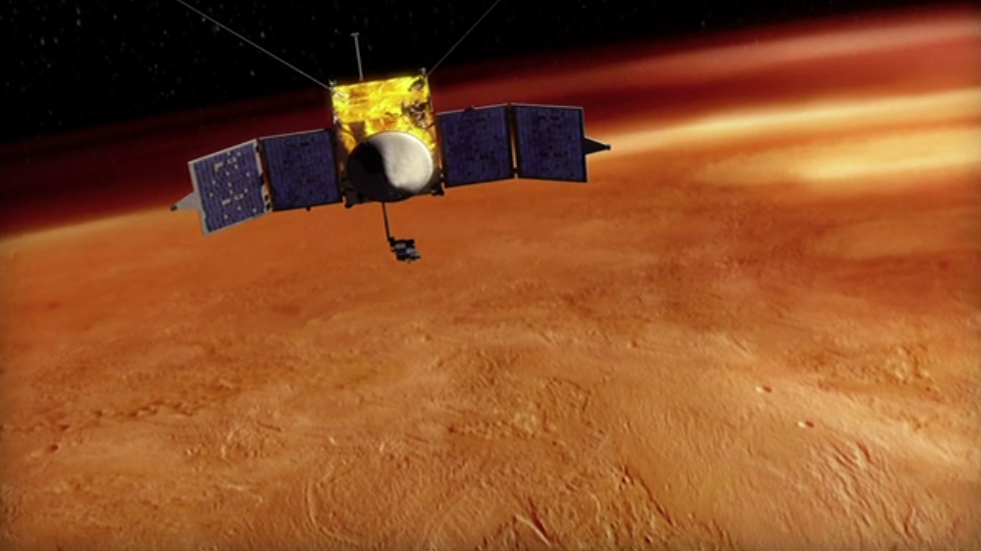NASA's Next Mars Probe Set to Launch Monday

NASA's next mission to Mars set to explore the Red Planet's atmosphere is getting ready to launch on Monday (Nov. 18).
The Mars Atmosphere and Volatile Evolution spacecraft (called MAVEN for short) is expected to investigate how the ancient Red Planet shifted from being a warm, wet world to the cold desert it is today.
"A maven is a trusted expert based on an accumulation of knowledge who seeks to pass that knowledge onto others," John Grunsfeld, associate administrator for the science mission directorate at NASA, said during a news conference on Oct. 28. "MAVEN, like its etymological origin, will indeed establish the knowledge on which scientists can build a story of the Mars atmosphere and help future human explorers who journey to Mars and the Mars surface." [NASA's MAVEN Mission to Mars (Photos)]
The probe will launch atop a United Launch Alliance Atlas 5 rocket from Cape Canaveral Air Force Station in Florida. The two-hour launch window opens at 1:28 p.m. EST (1828 GMT) and NASA will air the event live.
It will take about 10 months for MAVEN to arrive at Mars. The 5,410-pound (2,454 kilograms) probe will insert itself into an elliptical orbit around the Red Planet in September 2014.
While in orbit, the $671 million MAVEN mission will investigate the upper atmosphere of the Red Planet. Scientists hope to use MAVEN to uncover how and why Mars lost its atmosphere, which is now just one percent as dense as Earth's.
"There are two places that the atmosphere can go," MAVEN principal investigator Bruce Jakosky said during the news conference. "It can go down into the crust [or] it can up to the top of the atmosphere and be lost to space. I think these questions of where did the water go? Where did the CO2 [carbon dioxide] go from that early atmosphere are driving our exploration of Mars."
Breaking space news, the latest updates on rocket launches, skywatching events and more!
It's possible that the sun's solar wind was responsible for stripping away some of Mars' atmosphere, although many kinds of mechanisms could have played a role, Jakosky said.
In order to investigate the causes behind Mars' loss of atmosphere, MAVEN will carry a host of instruments into orbit around the Red Planet. The probe's science payload includes instruments designed to investigate solar particles, solar wind ions and solar wind electrons. Other instruments will examine the structure of the upper atmosphere and "how it responds to the solar energy that hits it in these different formats," Jakosky said.
MAVEN's launch window runs from Nov. 18 to Dec. 7 although it could launch as late as Dec. 15, according to Jakosky. If the probe misses this window of opportunity, however, the mission will need to wait two more years before Earth and Mars are favorably aligned in this way again.
Editor's Note: This story was updated to reflect a correction in John Grunsfeld's quote on Nov. 13 at 10 a.m. EST (1500 GMT).
Follow Miriam Kramer @mirikramer and Google+. Follow us @Spacedotcom, Facebook and Google+. Original article on SPACE.com.

Miriam Kramer joined Space.com as a Staff Writer in December 2012. Since then, she has floated in weightlessness on a zero-gravity flight, felt the pull of 4-Gs in a trainer aircraft and watched rockets soar into space from Florida and Virginia. She also served as Space.com's lead space entertainment reporter, and enjoys all aspects of space news, astronomy and commercial spaceflight. Miriam has also presented space stories during live interviews with Fox News and other TV and radio outlets. She originally hails from Knoxville, Tennessee where she and her family would take trips to dark spots on the outskirts of town to watch meteor showers every year. She loves to travel and one day hopes to see the northern lights in person. Miriam is currently a space reporter with Axios, writing the Axios Space newsletter. You can follow Miriam on Twitter.
